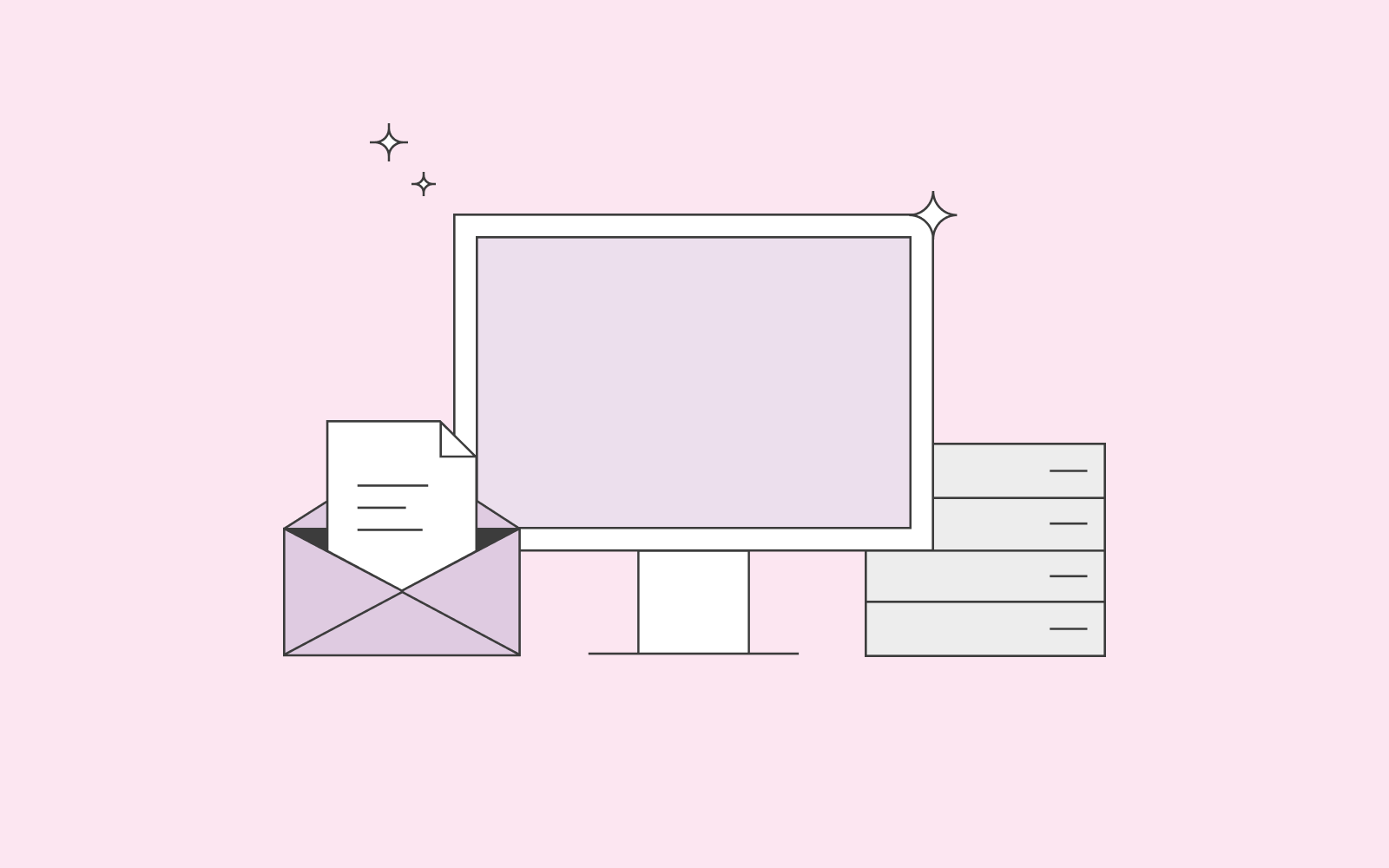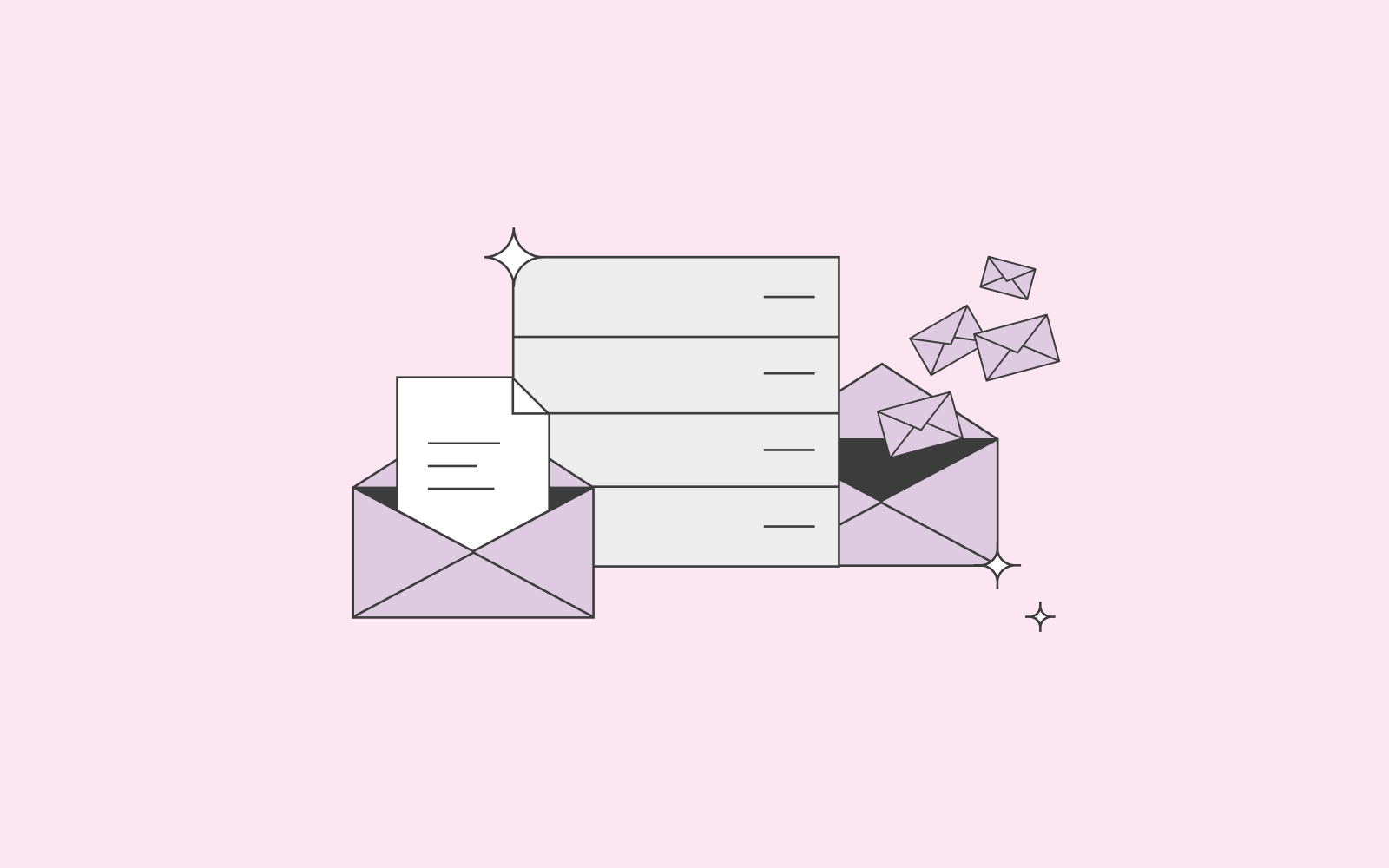What is an email server?
Learn about the process behind sending and receiving email, including the most common Internet communication protocols (IMAP, STMP, etc.).
An email server is usually completely invisible to you as a user, but it works around the clock to make sure you can send and receive emails as needed. You can think of a mail server as your personal mail carrier and inbox, all in one!
Whether you want to create a new email account or migrate an existing account, it can be useful to understand the components behind what often looks like an instant process. In this article, we’ll look at how the process of emailing looks at a network level and the different parts that make up an email server.
Brief Summary
An email server is a system that is responsible for sending emails from one email client to another. Without an email server, you are not able to send or receive emails. Mail servers utilise different Internet communication protocols to get information across to one another.

What is an email server?
An email server, also referred to as a mail server, is a computer system set up with the applications required to send and receive email. The mail server is the hardware at the core of a complex process that involves multiple networks and Internet communication protocols, which are the rules through which different online systems communicate with one another.
When you send a message, the mail server ensures that it is sent to the correct recipient. If something goes wrong, it will try to send multiple times, without you needing to do anything. If your mail server receives an email that does not have a valid recipient, it also informs the sender that something has gone wrong. The mail server simply makes sure that your mail works as it should, without you having to think about it.

An email server communicates with your devices and your webmail
Another task that a mail server has is to communicate with the mail client that you have on your devices or in your webmail. After your mail server receives a new mail, it is forwarded by the mail server to your mail client. There you can read the message, move it to a folder, add a label to it, or perhaps delete it. Any changes you make to the message are saved by the mail server so that you can delete an email on your mobile and not have to delete it again on your webmail.
There are a couple of protocols that are important to familiarise yourself with as they are the most commonly used setups for sending and receiving messages. These are IMAP and SMTP. Let’s take a closer look at what these two protocols do.
What is IMAP?
IMAP is an abbreviation of “Internet message access protocol”, and it’s the protocol that allows your smartphone or computer to retrieve new messages from your mail server. Fundamentally, the IMAP email server is responsible for receiving messages and letting you read them on your device.
You may need to configure IMAP as part of adding your email to a new device or new mail client. For IMAP to work, your mail client will need an address to your IMAP server (the mail server), a port for IMAP (often this is port ‘993’), as well as a username and password. If you don’t know which IMAP settings to fill in, you should check with your email provider.
Your IMAP email server has an additional function. It lets you get invites for events that go to an online calendar, which also enables you to obtain contact information for your address book.
What is SMTP?
SMTP stands for “simple mail transfer protocol”, and it’s a standard Internet protocol for outgoing mail. It is basically a set of commands your email client uses that authenticates and directs the transfer of emails you’ve created and sent.
When you send an email, it is first sent using SMTP from your smartphone, computer, or other device to your mail server. Your mail server then uses SMTP to send your message to the recipient’s mail server.
As an email user, you may encounter SMTP in your mail client’s settings. Depending on your setup, you may need to manually enter the address of your email provider’s SMTP server, the port for SMTP (usually 587), along with your username and password. As with IMAP, if you need more specific details regarding settings, you should be able to get the correct information from your email provider.
What are MX and DNS?
If you are going to activate an email for your company but your domain is not in the same location as your mail server, you may need to change the Domain Name System (DNS) settings for your domain’s mail exchange (MX) record. MX is an entry in your DNS settings that tells you where your mail server is located. With the right MX setting, you can direct incoming mail to the right server.
If you have both your domain and your webmail at one.com, you do not need to change your MX settings.
How does an email server work? A step by step look
Now that we’ve analysed the different protocols and systems required for email, let’s break down the steps that your email must take before it reaches its recipient:
1. You hit “send.”
You’ve written your message and included your recipient’s address. Now, you click to send it to its destination, triggering the rest of this chain of events, which starts with your electronic mail’s first stop: the SMTP.
2. The email arrives at the SMTP.
This first stop is responsible for locating your message’s correct destination. The SMTP does this by using the domain name in the email address to detect the recipient’s IP address, a unique number that identifies a computer on the internet.
3. An IMAP server receives your email.
Once the servers use the electronic mail domain to determine the correct address, the IMAP receives it with the information needed to send it to the right person. With this data, the IMAP connects with the recipient’s account and sends the text to its recipient.
4. Your message reaches its destination.
Here, the IMAP server provides another function. It enables the email recipient to read the text. The recipient can then interact with the message, whether to answer, forward, or delete it. If they choose to answer the electronic mail, their response will go through these same stages, and the cycle begins anew.
SMTP and IMAP may also encrypt and decrypt your information, depending on the setup used. After all, a proper email security protocol goes beyond a spam and virus filter.
Pro-tip: You can also consider using a POP3 server. POP stands for “Post Office Protocol” and it deletes your electronic mail after it’s downloaded from a computer, further bolstering security. You can usually select POP3 instead of IMAP for your mail.
Understanding the email process
According to a 2022 report from Statista, 4.5 billion people worldwide will be using email by 2025. Despite how widespread email has already become, most users are unaware of the complex process that lies behind it. While it looks instant, the mail server at the centre must carefully follow a series of steps ensure your mail is both sent and received correctly.
Here’s a quick overview of what we’ve covered:
What is an email server? Email servers are the computer networks equipped with protocols that an electronic mail goes through before reaching its destination.
What is a SMTP server for email? It’s the standard protocol for outgoing mail, which lets the email client determine the right destination for an email.
What is an IMAP email server? It’s the protocol that lets you receive emails. You can use POP3 as an alternative protocol.
